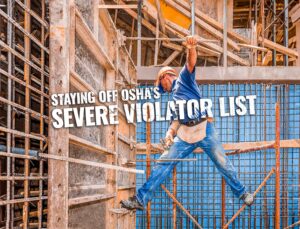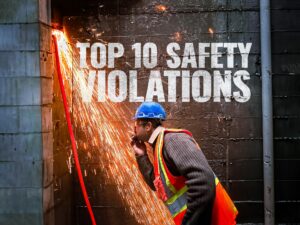Consequences of a High EMR
Experience Modification Rating (EMR) is a term used in the construction industry to measure the safety performance of a company. The EMR is calculated by comparing the company’s actual workers’ compensation claims experience to the expected claims experience for similar companies in the same industry. A high EMR means that a company has higher than expected workers’ compensation claims, which can lead to increased insurance premiums and decreased competitiveness in the marketplace. Reducing the EMR is crucial for companies in the construction industry to remain competitive and profitable.
The consequences of a high EMR can be significant. Insurance companies use the EMR to determine a company’s insurance premium, with a high EMR resulting in higher premiums. This can put a strain on a company’s finances and make it difficult to compete with other companies in the industry. In addition, a high EMR can also result in a loss of business opportunities, as some clients may not want to work with a company with a poor safety record. A high EMR can also damage a company’s reputation in the marketplace, making it difficult to attract new clients and retain existing ones.
Here are some steps that companies can take to reduce their EMR:
- Create a culture of safety: One of the most effective ways to reduce the EMR is by creating a culture of safety within the company. This involves establishing safety policies and procedures, providing regular safety training to employees, and encouraging employees to report safety concerns or hazards.
- Implement a safety management system: A safety management system is a comprehensive approach to managing safety within a company. It includes policies, procedures, and processes to identify, evaluate, and control workplace hazards. Implementing a safety management system can help companies to identify and address safety issues before they become a problem.
- Conduct regular safety inspections: Regular safety inspections can help companies to identify potential hazards and address them before they cause an injury or illness. Inspections should be documented to track progress and identify areas for improvement.
- Provide personal protective equipment (PPE): PPE can help to protect employees from workplace hazards and reduce the risk of injury or illness. Companies should provide appropriate PPE for their employees and ensure that it is used correctly and consistently.
- Conduct regular safety meetings: Regular safety meetings can help to keep employees engaged and informed about safety issues. These meetings should be interactive and provide opportunities for employees to ask questions and provide feedback.
By taking these steps, companies can reduce their EMR and improve their safety record. In addition to the financial benefits of lower insurance premiums, a lower EMR can also lead to improved employee morale and retention, increased productivity, and a better reputation in the marketplace.
Ultimately, reducing the EMR is a win-win for companies and their employees, as it promotes a safer and more productive workplace for everyone. For professional advice on how to implement any of the above steps or for tools that will help improve your safety program and lower your EMR, request a consult with a Safety Plus safety expert at any time.
Recommended Reading
TOP OSHA Citations by Industry
OSHA, or the Occupational Safety and Health Administration, is a government agency that enforces workplace safety regulations in the United States. One of their primary functions is to conduct inspections of workplaces to ensure compliance with these regulations. When violations are found, OSHA can issue citations and penalties. In this blog post, we will explore…
Staying off OSHA’s SVL (Severe Violator List)
Staying off of OSHA’s Severe Violator List is important for any business to maintain a safe work environment and avoid costly penalties. The Severe Violator List (SVL) is a program launched by the Occupational Safety and Health Administration (OSHA) to focus on employers who have committed severe or repeated violations of workplace safety regulations. Being…
Top 10 Safety Violations in Manufacturing
Manufacturing is an industry that requires strict adherence to safety regulations to ensure the health and well-being of employees, as well as the quality of the products produced. Unfortunately, there are still too many safety violations that occur in the manufacturing industry – causing billions of dollars in irreparable and tragic incidents. Here are the…
Beating the Heat: Safeguarding Workers’ Health and Safety in Rising Temperatures
As temperatures continue to rise, heat-related illnesses have become a growing concern for both workers and employers. Working in extreme heat conditions poses significant risks to the health and safety of employees, making it essential for employers to take proactive measures to prevent heat-related illnesses. In this blog post, we will discuss the importance of…
SAFETY MANAGEMENT SIMPLIFIED
Prevent Tragedy and Scale Effectively by Making Safe Work Efficient




